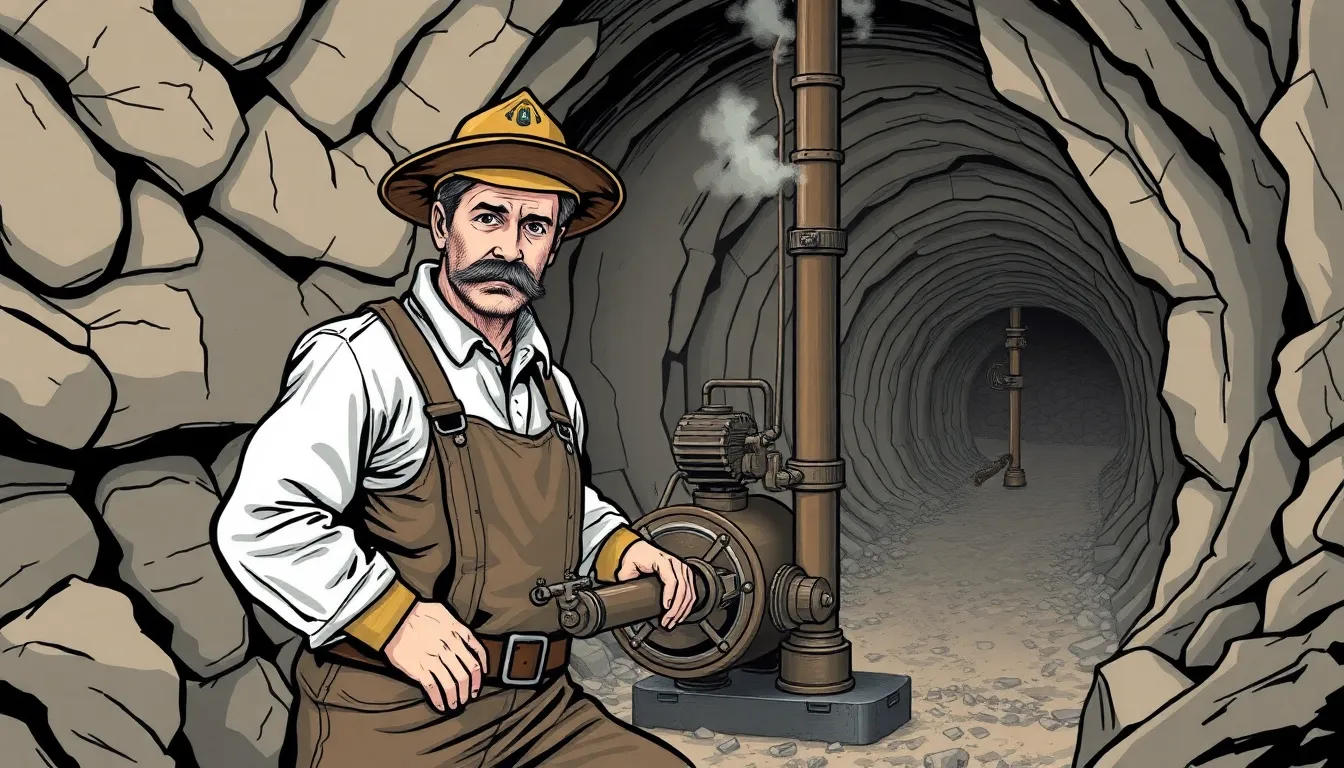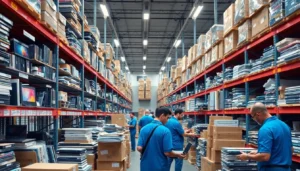In a world where space is at a premium, the underground realm is becoming the new frontier. Tunnelling and underground space technology aren’t just for moles and gophers anymore; they’re revolutionizing urban planning and infrastructure. Imagine a bustling city above while a hidden world thrives below, complete with transport systems, utilities, and even parks.
Table of Contents
ToggleOverview of Tunnelling and Underground Space Technology
Tunnelling technology influences urban development by enabling construction beneath existing infrastructure. Techniques such as tunnel boring machines (TBMs) provide efficient excavation, minimizing surface disruption. These machines, capable of digging through various geological conditions, make tunneling feasible even in challenging environments.
Underground space technology encompasses diverse applications, going beyond transportation systems. This includes utilities like water, gas, and electricity being routed below ground, reducing congestion on city streets. Parks and recreational areas can now find homes beneath urban landscapes, improving green space availability without encroaching on surface land.
Innovation drives this field forward. Advances in materials and engineering techniques enhance safety and sustainability for underground projects. Smart monitoring systems increasingly track structural health, ensuring longevity and reducing maintenance costs.
Collaboration is vital. Public-private partnerships often promote large-scale projects, combining resources and expertise to deliver complex undertakings. Presently, cities like Tokyo and London utilize extensive underground networks that highlight the potential of underground space technology.
Regulations and standards dictate best practices. Local governments impose guidelines to guarantee safety, environmental protection, and community benefits. Compliance remains critical as this technology evolves.
Costs and time efficiency emerge as key considerations. Initial investment in tunnelling might be high, but long-term savings often outweigh these expenses. Transport systems, like subways, can reduce traffic congestion, ultimately benefitting urban mobility.
The future of tunnelling and underground technology continues to unfold, promising innovative solutions to accommodate growing urban populations. As cities expand, the focus shifts towards optimizing subterranean space, aligning infrastructure with sustainable development goals.
Historical Development of Tunnelling Techniques

Tunnelling techniques have evolved significantly over the centuries. Innovations emerged from necessity to create underground passages for transportation, storage, and utility routing.
Early Techniques and Innovations
Ancient civilizations utilized basic hand tools to carve out tunnels. Romans developed stone-lined aqueducts that transported fresh water across vast distances. In Asia, the Chinese employed simpler mining techniques for constructing the Great Wall’s subterranean passages. The use of timber for reinforcement marked an early significant advancement, improving tunnel stability. Miners also pioneered the use of gunpowder in the 17th century to facilitate large-scale excavation. These early methods laid a foundation for modern tunnelling practices.
Impact of Industrial Revolution
The Industrial Revolution sparked a surge in tunnelling projects across Europe and North America. Steam-powered machinery revolutionized excavation methods, greatly enhancing efficiency and speed. Railway expansion necessitated vast underground networks, leading to the construction of tunnels for trains. Additionally, innovative materials, such as cast iron and concrete, entered the scene, providing greater durability and safety. Engineers began to prioritize safety standards to protect workers from cave-ins and gas hazards. This transformation ultimately positioned tunnelling as a vital component of urban infrastructure, supporting growth and connectivity.
Modern Tunnelling Methods
Tunnelling techniques adapt continuously to meet urban demands. Mechanical tunneling employs advanced machinery to achieve efficiency and precision.
Mechanical vs. Manual Tunnelling
Mechanical tunneling relies on tunnel boring machines (TBMs) to excavate soil and rock. TBMs operate with remarkable speed, creating smooth tunnel profiles while reducing surface disruption. Speed can reach up to 50 meters in a single day, depending on the geology. Manual tunneling, on the other hand, utilizes hand tools and smaller equipment for excavation. This method is often applied in narrow or complex environments where machinery faces limitations. Flexibility characterizes manual techniques, allowing for detailed adjustments in challenging terrains. Cost considerations play a significant role, as mechanical methods tend to require larger initial investments compared to manual approaches. Both methods find unique applications, depending on the project’s scope and conditions.
Emerging Technologies in Tunnelling
Innovative technologies are reshaping tunneling practices, enhancing efficiency and safety. One example is the use of drone technology for preliminary site surveys, allowing for precise mapping before excavation begins. Artificial intelligence and machine learning analyze geological data, optimizing tunneling approaches. Smart monitoring systems track structural integrity in real-time, providing vital data throughout the construction process. New materials, such as fiber-reinforced polymers, offer increased durability and reduced weight, improving overall tunneling outcomes. Furthermore, incorporating sustainability measures becomes crucial, with initiatives focusing on minimizing environmental impacts. These advancements collectively aim to address both the challenges of urbanization and the need for modern infrastructure solutions.
Applications of Underground Space Technology
Underground space technology plays a crucial role in developing urban areas and optimizing existing infrastructure. Its applications extend across various sectors, each contributing to improved efficiency and reduced surface congestion.
Transportation Infrastructure
Advanced tunneling techniques support the construction of efficient transportation systems. Subways, light rail, and intercity rail lines benefit from underground networks. Cities like New York and London showcase the integration of these systems, allowing for increased connectivity. Moreover, underground highways minimize surface traffic, promoting quicker commutes. TBMs enable precise excavation, lowering disruption while enhancing system safety. Such systems alleviate surface-level congestion, transforming the urban transportation landscape.
Utility Networks and Water Management
Underground space technology addresses critical needs in utility management and water systems. The routing of essential services like electricity, gas, and water takes place below ground, freeing up precious surface real estate. Innovative trenchless technology reduces soil disturbance while installing new pipelines or cables. Flood management systems leverage underground reservoirs to store excess water during storms. Efficient drainage strategies enhance urban resilience against flooding events. Smart monitoring sensors track infrastructure health, ensuring timely maintenance and reducing disruptions.
Environmental Considerations in Tunnelling
Environmental considerations play a crucial role in tunnelling projects. Proper planning addresses potential impacts on ecosystems and communities. Noise mitigation measures are essential during excavation, as tunnel boring machines can generate significant sound levels. Dust control practices help maintain air quality, preventing adverse effects on nearby residents.
Water management strategies are vital, especially in areas prone to flooding. Implementing systems to divert groundwater protects against inundation during construction. Environmental monitoring systems track changes in soil and water quality, ensuring compliance with regulations. Waste management protocols minimize the environmental footprint by recycling materials when possible and safely disposing of hazardous substances.
Biodiversity assessments evaluate the potential impacts of tunnelling on local flora and fauna. When necessary, mitigation measures promote wildlife conservation. These actions support ecological balance while allowing urban development to proceed. The integration of green technologies within underground spaces enhances sustainability and reduces overall energy consumption.
Public engagement contributes to successful tunnelling projects by ensuring community concerns are addressed. Transparent communication encourages trust between stakeholders and the public, facilitating smoother project execution. Partnerships with environmental organizations can provide valuable insights and foster collaborative approaches to sustainability.
Innovative materials often enhance environmental performance as well. For instance, using fiber-reinforced polymers reduces resource consumption and improves longevity. Ultimately, prioritizing environmental considerations leads to sustainable urban infrastructure, balancing development needs with ecological stewardship.
Future Trends in Tunnelling and Underground Space Technology
Emerging innovations are shaping the future of tunneling and underground space technology. Advanced tunnel boring machines (TBMs) are being developed to enhance efficiency in complex urban environments. Enhanced materials, such as fiber-reinforced polymers, are providing increased durability and sustainability for underground projects.
Autonomous systems play a significant role in future methods. Drones are revolutionizing surveying techniques, allowing for precise mapping of subterranean spaces. Artificial intelligence is streamlining project management by analyzing data to predict potential issues before they arise. Smart monitoring systems are also gaining traction, enabling real-time tracking of structural health for improved safety.
Regulatory frameworks are evolving to keep pace with technological advancements. Guidelines are being established to address environmental impacts, ensuring projects align with sustainability goals. Compatibility with existing urban infrastructures is a key focus, allowing seamless integration without disrupting community aesthetics.
Public-private partnerships are crucial for scaling large underground developments. Collaboration between governments and private firms maximizes resources and expertise, driving innovation in cities worldwide. Tokyo and London are leading examples of successful partnerships leveraging extensive underground networks.
Urban resilience is another priority in tunneling projects. Flood management systems and innovative drainage solutions are vital for reducing the impact of climate change. Adopting sustainable practices in tunneling provides long-term benefits, balancing urban expansion with ecological responsibility.
Investment in training and education is necessary to prepare the workforce for the future. Emphasizing skill development in new technologies ensures that professionals are equipped to handle emerging challenges. Future-oriented strategies foster a skilled workforce committed to innovating in underground space technology.
Tunneling and underground space technology are reshaping urban landscapes in innovative ways. As cities continue to grapple with space constraints, the potential for underground solutions becomes increasingly vital. The advancements in tunneling methods and materials not only enhance efficiency but also prioritize sustainability and safety.
Collaboration among stakeholders ensures that projects meet regulatory standards while addressing community needs. With a focus on environmental stewardship and smart infrastructure, the future of urban development looks promising. Embracing these technologies will pave the way for more livable, connected, and resilient cities.



